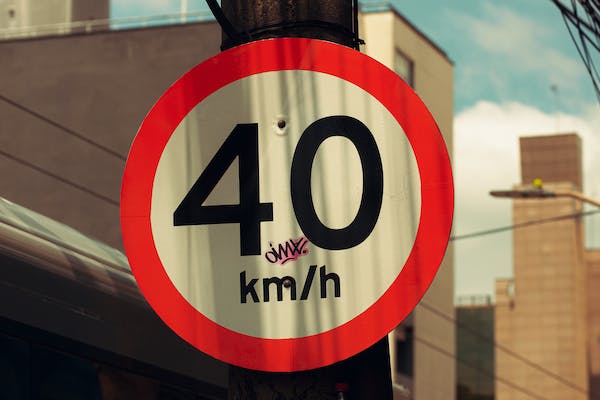In an era where GPS speed governor continues to reshape every aspect of our lives, it comes as no surprise that the transportation industry is also undergoing a transformation. The integration of cutting-edge technologies has brought forth remarkable advancements in road safety and operational efficiency. Among these innovations, the emergence of GPS speed governors stands out as a game-changer that promises to redefine how vehicles navigate our roadways. In this article, we delve into the world of GPS speed governors, exploring their significance, functionalities, and the profound impact they hold in shaping the future of road travel.
As roads become increasingly crowded and the demand for transportation services surges, the importance of safe and responsible driving practices has never been more pronounced. This is where GPS speed governors enter the scene, combining the power of global positioning systems (GPS) with speed governing capabilities to create a dynamic solution for regulating vehicle speeds. Unlike traditional speed limiters that solely rely on mechanical or electronic means to restrict speed, GPS speed governors leverage real-time satellite data to provide a more versatile and adaptive approach.
The concept of a GPS speed governor revolves around a simple yet ingenious premise: vehicles are equipped with GPS technology that communicates with satellite networks, allowing for accurate tracking of the vehicle’s location, speed, and other relevant parameters. This data is then processed by an onboard control unit, which interacts with the vehicle’s engine management system to adjust and maintain speeds within predefined limits. The result is a synchronized synergy between advanced navigation and automated speed regulation, creating a safer and more efficient travel experience.
One of the key advantages of GPS speed governors is their ability to incorporate geographical context into speed regulation. Unlike traditional speed limiters that often fail to account for varying speed limits on different roads, GPS governors can dynamically adjust speeds based on the specific location of the vehicle. This means that when a vehicle enters a residential area, a school zone, or a construction site, the speed governor can adapt the vehicle’s speed to match the relevant speed limit, enhancing safety for both the driver and pedestrians.
Moreover, GPS speed governors can provide valuable data insights for fleet managers and transportation authorities. By collecting and analyzing data related to vehicle speeds, routes taken, and driver behavior, these systems enable better decision-making, route optimization, and the development of tailored training programs for drivers.
What is the max speed governor?

A max speed governor, also known as a speed limiter or speed governor, is a device or system designed to restrict the maximum speed at which a vehicle can operate. This technology is commonly used in commercial vehicles, such as trucks, buses, and fleet vehicles, to promote road safety, reduce fuel consumption, and comply with regulatory requirements.
The max speed governor works by electronically controlling the engine’s power output or fuel supply, preventing the vehicle from exceeding a predetermined speed limit. This limit is often set by regulatory authorities or fleet managers based on safety considerations, legal requirements, and operational needs. The speed limit is typically programmed into the vehicle’s engine control unit (ECU) or a dedicated control module connected to the vehicle’s systems.
The primary goals of implementing a max speed governor include:
Enhancing Road Safety:
Speeding is a major contributor to road accidents and fatalities. By limiting a vehicle’s maximum speed, the risk of accidents caused by excessive speed is reduced, allowing drivers more time to react to changing road conditions and unexpected events.
Compliance with Regulations:
Many regions and countries have regulations in place that mandate the use of max speed governors in commercial vehicles. These regulations are aimed at promoting road safety and ensuring that vehicles stay within prescribed speed limits.
Fuel Efficiency:
Vehicles operating at higher speeds consume more fuel due to increased air resistance and greater engine exertion. By limiting the top speed, fuel consumption can be optimized, leading to cost savings for fleet operators and reduced environmental impact.
Reduced Wear and Tear:
Excessive speed can cause additional wear and tear on vehicle components, including brakes, tires, and engines. Limiting the speed helps extend the lifespan of these components, leading to lower maintenance and repair costs.
Driver Behavior and Accountability:
Max speed governors encourage responsible driving behavior by discouraging drivers from exceeding speed limits. This can lead to improved driver accountability and safer road practices.
It’s important to note that there are different types of max speed governors. Some use mechanical means to restrict fuel flow, while others utilize electronic control systems. Additionally, the speed limit can often be adjusted or reprogrammed based on specific requirements, such as local speed limits or varying road conditions.
Max speed governors have become an essential tool in modern fleet management and transportation industries. They not only contribute to road safety but also offer economic and environmental benefits. As technology continues to evolve, we may see more advanced and integrated speed governing solutions that incorporate real-time data, such as GPS information, to provide more accurate and context-aware speed regulation.

